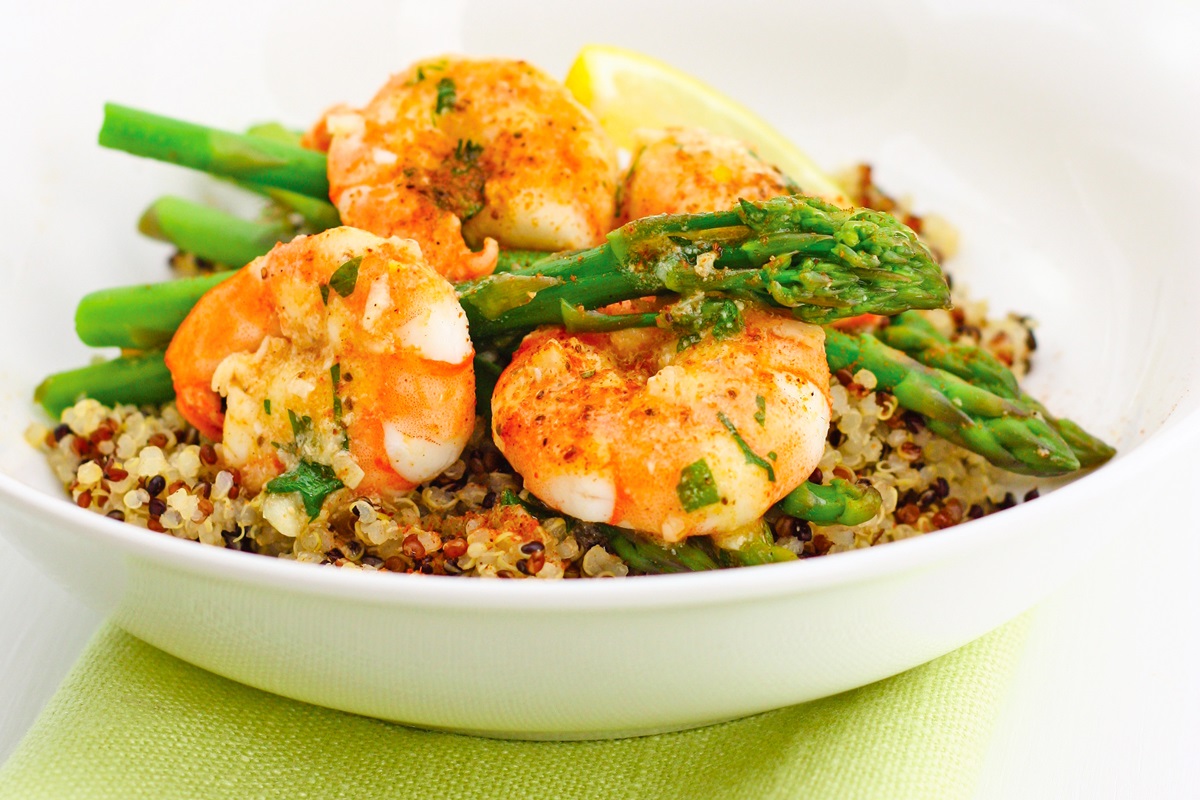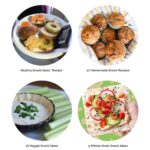Imagine a world of creamy mac and cheese, fluffy mashed potatoes, and rich tomato soup—all without a single dairy product in sight. This isn’t a culinary fantasy; it’s the delicious reality explored in “No Butter, No Cheese: Dairy-Free Comfort Food Classics.” This guide dives deep into the art of creating comforting, satisfying meals that are both dairy-free and undeniably delectable. We’ll uncover the secrets to crafting creamy sauces, exploring globally inspired dairy-free recipes, and mastering dairy-free baking techniques. Prepare to expand your culinary horizons and discover a world of flavor possibilities.
From exploring the versatility of dairy-free butter substitutes like coconut oil and vegan margarine to mastering the art of cashew cheese and nutritional yeast, we’ll equip you with the knowledge and recipes to recreate your favorite comfort food classics. We’ll navigate the nuances of adapting textures and flavors, providing step-by-step instructions and troubleshooting tips to ensure success in your dairy-free cooking journey. Get ready to tantalize your taste buds and redefine your understanding of comfort food.
Adapting Classic Comfort Food Recipes

Transforming beloved comfort food classics into dairy-free delights requires careful consideration of both texture and taste. The creamy richness of dairy is often a key component of these dishes, so substituting it necessitates creative solutions to maintain that satisfying mouthfeel and familiar flavor profile. This involves exploring alternative ingredients and adapting cooking techniques to achieve the desired results.
Dairy-Free Mac and Cheese
This recipe uses a cashew cream base for a luxuriously smooth and cheesy texture. The nutritional yeast provides a savory, cheesy flavor that closely mimics the original.
- Prepare the Cashew Cream: Soak 1 cup raw cashews in boiling water for at least 30 minutes, or until soft. Drain and blend with 1 cup water until completely smooth and creamy. A high-speed blender is recommended for optimal results. The resulting cream should be thick and velvety, resembling a heavy cream in consistency.
- Cook the Pasta: Cook 1 pound of elbow macaroni according to package directions until al dente. Drain and set aside.
- Make the Cheese Sauce: In a saucepan, combine the cashew cream, 1/4 cup nutritional yeast, 2 tablespoons lemon juice, 1 teaspoon onion powder, 1 teaspoon garlic powder, 1/2 teaspoon salt, and 1/4 teaspoon black pepper. Whisk constantly over medium heat until the sauce thickens slightly. The sauce should coat the back of a spoon and have a glossy sheen.
- Combine and Bake (Optional): Add the cooked pasta to the cheese sauce and stir to coat. For a baked mac and cheese, transfer the mixture to a greased baking dish, top with breadcrumbs (optional), and bake at 375°F (190°C) for 20-25 minutes, or until golden brown and bubbly. A golden-brown crust will add an extra layer of texture and appeal.
Dairy-Free Mashed Potatoes
Achieving creamy, fluffy mashed potatoes without dairy relies on using alternative fats and incorporating techniques that trap moisture within the potatoes.
- Boil the Potatoes: Peel and chop 2 pounds of russet potatoes into roughly equal-sized pieces. Boil in salted water until tender, about 15-20 minutes. The potatoes should easily pierce with a fork. Avoid overcooking, as this can lead to mushy potatoes.
- Create the Creamy Base: While the potatoes are still hot, drain them well. Return them to the pot and mash with a potato masher or electric mixer. Add 1/4 cup unsweetened plant-based milk (such as soy, almond, or oat milk), 2 tablespoons vegan butter, and salt and pepper to taste. The vegan butter will add richness and a creamy texture that closely resembles dairy butter.
- Adjust Consistency: Gradually add more plant-based milk if needed to reach your desired consistency. The potatoes should be smooth and creamy, but not watery. A light and fluffy texture is the ultimate goal. Avoid over-mixing, as this can lead to gummy potatoes.
Dairy-Free Creamy Tomato Soup
This version uses blended tomatoes and a touch of coconut milk for a velvety smooth texture and rich flavor.
- Sauté Aromatics: Sauté 1 diced onion and 2 cloves of minced garlic in 1 tablespoon of olive oil until softened. The onions should be translucent and the garlic fragrant.
- Simmer Tomatoes: Add 28 ounces of canned crushed tomatoes, 1 cup of vegetable broth, 1/2 cup of coconut milk, 1 teaspoon of sugar, 1/2 teaspoon of dried basil, and salt and pepper to taste. Simmer for 15-20 minutes, allowing the flavors to meld. The soup should reduce slightly, creating a more concentrated flavor.
- Blend for Smoothness: Carefully transfer the soup to a blender (or use an immersion blender) and blend until completely smooth. The soup should have a creamy, velvety consistency without any chunks of tomato.
- Garnish and Serve: Garnish with fresh basil or a swirl of coconut cream (optional) before serving. A simple garnish can elevate the presentation and add a fresh element to the soup.
Challenges in Making Dairy-Free Comfort Food and Solutions
Adapting classic comfort food recipes to be dairy-free presents some unique challenges. Understanding these challenges and having solutions at hand is crucial for success.
- Achieving Creamy Texture: Dairy provides a unique creaminess that is difficult to replicate. Solution: Use alternative creamy bases like cashew cream, blended potatoes, or coconut milk. Pureeing soups and sauces also helps to achieve a smoother texture.
- Replicating Cheesy Flavor: Nutritional yeast is a fantastic substitute for the cheesy flavor of dairy. Solution: Experiment with different amounts to achieve your desired level of “cheesiness”. Adding other savory flavors like garlic powder, onion powder, and herbs can enhance the overall flavor profile.
- Maintaining Moisture: Dairy helps retain moisture in dishes. Solution: Use plant-based milks or broths to add moisture. Ensure ingredients are cooked properly to avoid dryness. Adding a small amount of oil can also help.
- Preventing Separation: Some dairy-free substitutes can separate. Solution: Use a high-quality blender or immersion blender to create a smooth emulsion. Adding a thickening agent like cornstarch or arrowroot powder can also help.
Exploring Global Dairy-Free Cuisine
A captivating journey awaits as we delve into the vibrant world of international cuisine, uncovering naturally dairy-free comfort food dishes that are both delicious and culturally significant. These recipes showcase the incredible diversity of flavors and traditions found across the globe, proving that rich and satisfying meals can exist without the need for dairy products. We will examine three examples, comparing their flavor profiles to their dairy-containing counterparts and exploring their cultural contexts.
Exploring the rich tapestry of global cuisine reveals a surprising abundance of naturally dairy-free comfort food classics. These dishes, often passed down through generations, highlight the ingenuity and resourcefulness of diverse cultures in creating nourishing and flavorful meals without relying on dairy. Their absence of dairy doesn’t diminish their comforting qualities; rather, it emphasizes the inherent deliciousness of diverse ingredients and cooking techniques.
Naturally Dairy-Free Ethiopian Stew: Wat
Wat, a staple in Ethiopian cuisine, is a hearty and flavorful stew that is naturally dairy-free. A vibrant, richly spiced concoction, it typically features a base of berbere spice blend (a complex mixture of chilies, garlic, ginger, and other aromatic spices), onions, and a variety of vegetables and often meat or lentils. The stew is simmered until the flavors meld together, creating a deep, complex taste that is both warming and satisfying. The texture is often thick and slightly oily, stemming from the use of clarified butter (although this is sometimes omitted in vegan variations).
The vibrant red hue of the berbere spice blend is a visual feast, reflecting the intensity of flavors within the dish.
A dairy-containing counterpart might incorporate yogurt or cream to enrich the stew, adding a tangy and creamy element. However, Wat’s inherent richness comes from the spices, the slow cooking process, and the often-used clarified butter, eliminating the need for dairy’s contribution. In Ethiopian culture, Wat is often served communally, symbolizing togetherness and sharing. The act of eating Wat with injera (a spongy flatbread) is a deeply ingrained cultural practice, representing a significant social and culinary tradition.
Japanese Vegetable Curry: Vegetarian Kare Raisu
Japanese vegetarian curry, or Kare Raisu, is a beloved comfort food that’s naturally dairy-free in its most common form. This rich, savory curry features a blend of aromatic spices, including turmeric, ginger, garlic, and curry powder, simmered with a variety of vegetables such as potatoes, carrots, onions, and sometimes mushrooms or eggplant. The curry is often thickened with a roux made from flour and oil, creating a velvety smooth consistency. It’s typically served over steamed rice, offering a comforting and flavorful meal.
The visual appeal of Kare Raisu lies in its rich, deep brown color, a testament to the slow simmering of spices and vegetables. The aroma, a complex blend of spices and simmered vegetables, is instantly inviting.
While some variations might include a dollop of yogurt or cream for added richness, the traditional recipe relies on the depth of flavor from the spices and the natural sweetness of the vegetables. This makes it a hearty and satisfying dish without relying on dairy for its creamy texture. In Japanese culture, Kare Raisu is often associated with home-style cooking and comfort, a dish enjoyed by people of all ages.
Mexican Black Beans: Frijoles Negros
Frijoles Negros, or Mexican black beans, are a cornerstone of Mexican cuisine, and a naturally dairy-free comfort food. These beans are simmered with onions, garlic, and often epazote (a distinctive herb with a pungent aroma), creating a deeply flavorful and hearty dish. The beans are typically cooked until tender and slightly mushy, providing a comforting texture. They are frequently served as a side dish or incorporated into various other dishes, showcasing their versatility.
The visual appeal of Frijoles Negros lies in the deep, dark color of the beans, contrasted by the bright green of any added cilantro or onions. The aroma is earthy and comforting, hinting at the slow cooking process and the use of spices.
While some Mexican dishes might incorporate cheese or cream, Frijoles Negros remain a fundamentally dairy-free staple. Their flavor profile is earthy and savory, relying on the inherent flavor of the beans and the simple seasonings. In Mexican culture, Frijoles Negros represent a staple food, embodying simplicity and nourishment, and frequently appearing on tables across the country.
Embarking on a dairy-free culinary adventure doesn’t mean sacrificing the comforting flavors and textures you love. “No Butter, No Cheese: Dairy-Free Comfort Food Classics” proves that with creativity and the right techniques, you can recreate beloved dishes without compromise. From mastering dairy-free substitutions to understanding the science behind achieving that perfect creamy texture, this guide provides a comprehensive toolkit for anyone looking to expand their culinary repertoire and embrace a delicious, dairy-free lifestyle. The journey is filled with flavorful discoveries, and the destination is a table laden with comforting, plant-based delights.
Q&A
Can I freeze dairy-free mac and cheese?
Yes, dairy-free mac and cheese freezes well. Allow it to cool completely before storing in an airtight container for up to 3 months.
What are some good dairy-free milk alternatives for baking?
Unsweetened almond milk, soy milk, and oat milk are popular choices, each offering slightly different results. Experiment to find your favorite.
Are all dairy-free cheeses equally nutritious?
No, nutritional content varies widely. Check the nutrition labels to compare protein, fat, and sodium content.
How can I prevent my dairy-free mashed potatoes from becoming gummy?
Use starchy potatoes, avoid over-mixing, and incorporate dairy-free milk or cream gradually to maintain a fluffy texture.


